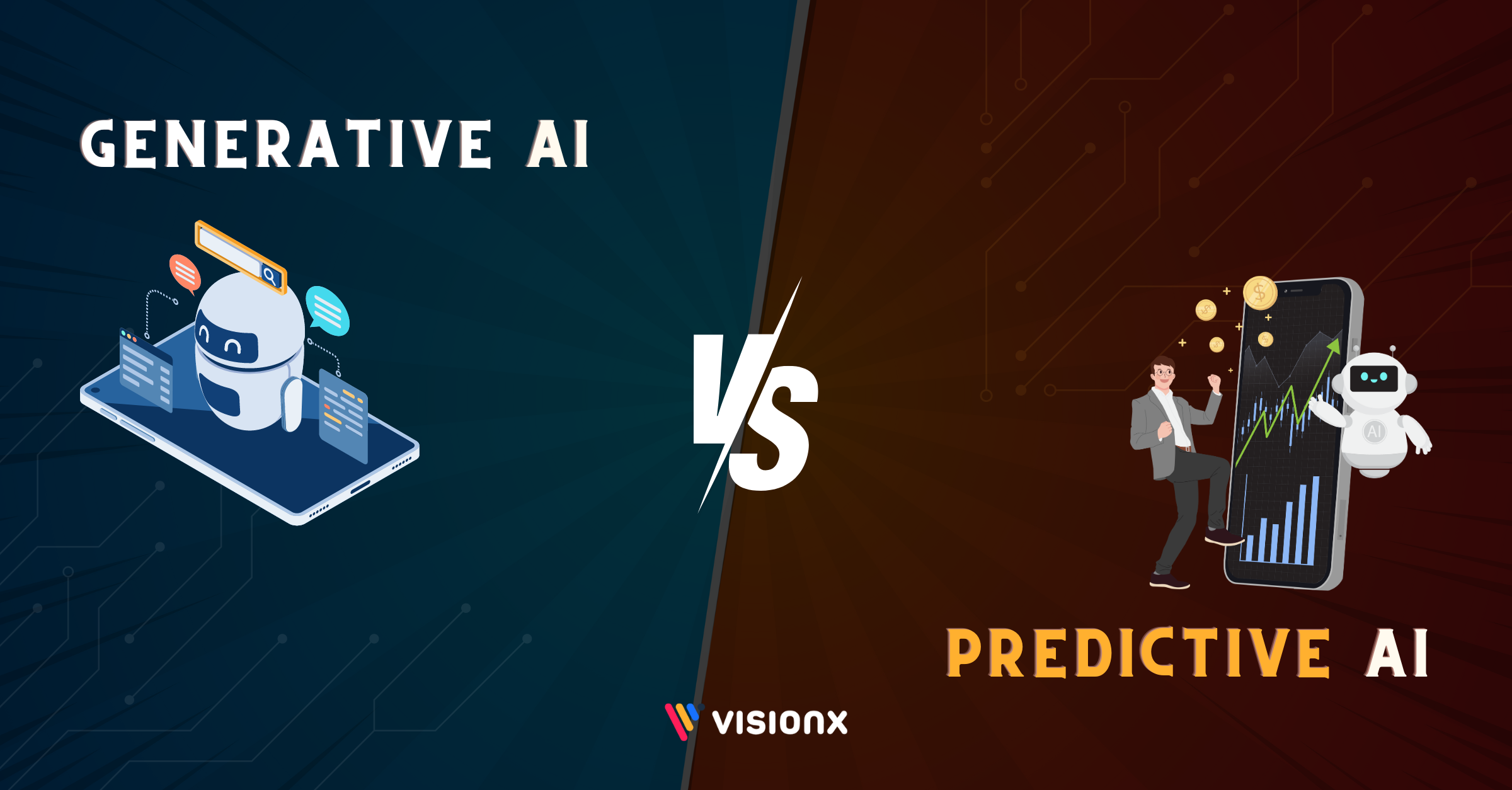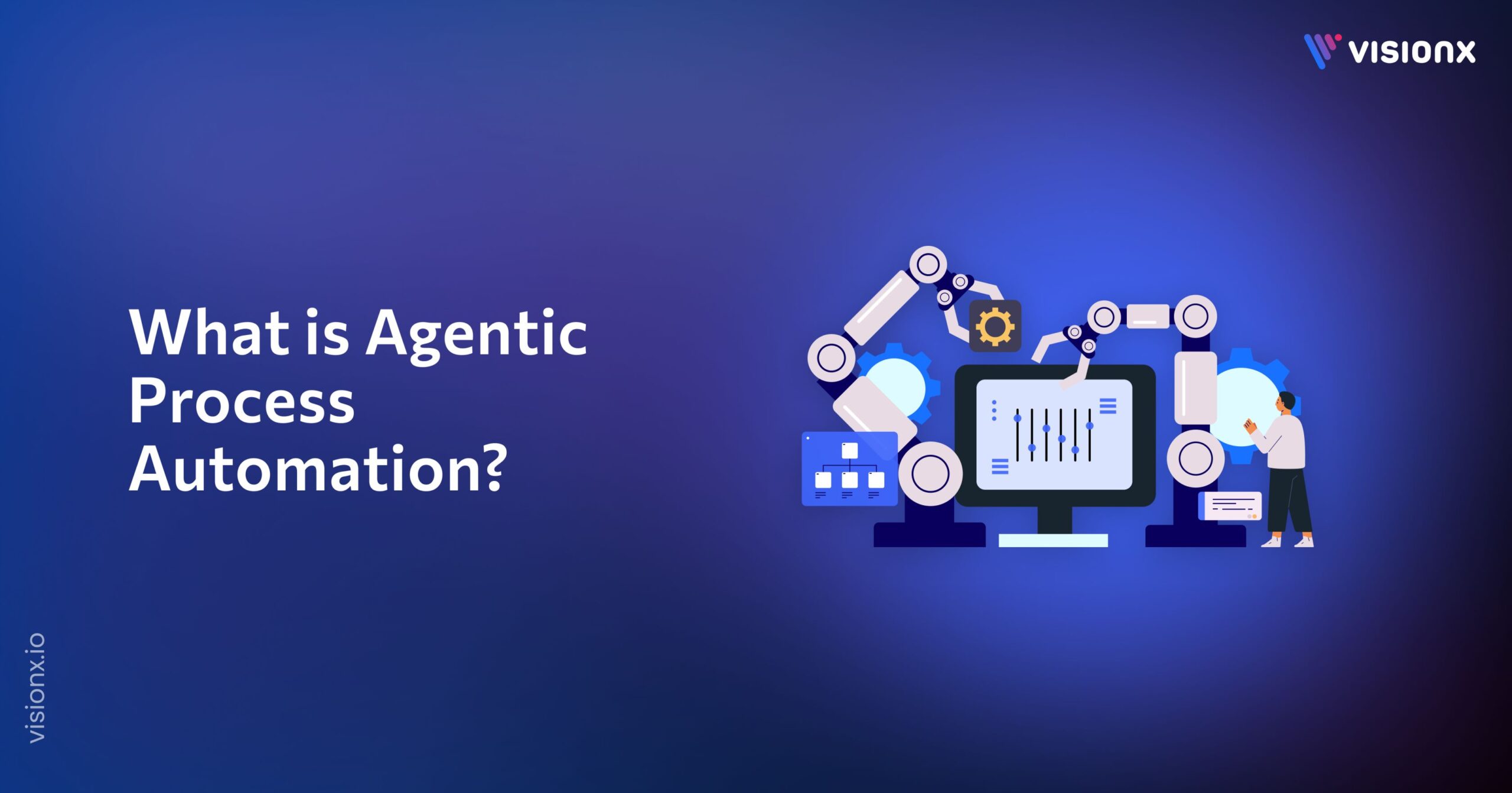Artificial Intelligence (AI) is turning from a mere concept in science fiction into a lively driver of real-world innovation and throwing the major forces on industries, businesses, and everyday life.
Its journey through time—from the early days of simple algorithms to today’s sophisticated neural networks—reflects technological advancement and an evolving understanding of what machines can achieve.
In this age of rapid technological growth, two significant branches of AI have emerged as game-changers: Generative AI Vs. Predictive AI. Each represents unique approaches and technologies with distinct capabilities and applications.
Generative AI is known for its ability to create new, never-before-seen content, and Predictive AI excels in forecasting outcomes based on existing data.
Differentiating the two and knowing the kinds of AI being developed is important for businesses, creatives, and policy-makers. Understanding how these technologies work and the potential impacts they can bring will help us utilize these tools more effectively.
What is Predictive AI?
Predictive AI refers to a branch of artificial intelligence dwelling upon historical data analysis to have an opportunity to predict events or outcomes. For that, it uses a wide range of statistical techniques and machine-learning models to identify patterns and trends in vast datasets, then uses those insights to make predictive ideas about what could be happening further.
This kind of AI is of great help in environments where predictive analytics could be useful in improving decisions and operations’ effectiveness.
Common Applications and Examples:
1. Weather Forecasting
This is the application of predictive AI in analyzing past data on weather conditions to forecast patterns and events of the future. It helps meteorologists make appropriate weather predictions for agriculture, transport, and everyday planning.
2. Recommender Systems
From streaming services like Netflix to e-commerce platforms like Amazon, predictive AI algorithms study users’ behavior and preferences regarding what products, movies, or songs they would likely want. This personalization only improves the user experience and helps increase platform engagement.
3. Risk Assessment
In finance, the Predictive AI model system checks the borrower’s creditability through his transaction history, the pattern of re-payment, and other behaviors in handling financials. This will give the banks better control over the credit risk and those who want to borrow money from them.
How Predictive AI Works?
Predictive AI operates through a sequence of data-driven steps:
Step 1: Data Collection:
Gather relevant and extensive historical data. This data forms the backbone of predictive analysis.
Step 2: Data Pre-processing:
At this point, data cleaning refers to removing any inconsistencies in the data, treating the missing values, and transforming the data into a form that might support further analysis.
Step 3: Pattern Recognition:
This algorithm is applied to discover the distribution and relationship forms within the data. Methods include regression analysis, decision trees, neural networks, and other widely known approaches.
Step 4: Make predictions:
This is where, upon appropriate training and recognition of the patterns within the data, such models can be leveraged to make further predictions on data inputs that will be recorded in the future.
Predictive AI makes an enormous difference in the quality and quantity of data used and in the level of algorithms applied to deliver precise predictions. With the sizeable data and continuous improvement of models, it is always on the improvement curve with more and more accuracy, and indeed, this has shown to be a vital source across many fields.
What is Generative AI?
Generative AI creates new content and data that closely resemble real-world objects. This technology generates text, images, music, or even synthetic data almost identical to human data instead of predicting or analyzing.
Applications of Generative AI
1. Art and Design:
GANs produce emerging designs and artworks that offer artists and designers tools to explore new creative expressions.
2. Film and Game Industry:
GANs have already been used in the film and game industry to help generate the environments and characters of the real world, thus allowing visual effects to flow without massive labor work.
3. Healthcare:
This is in line with the synthesis of data in research with a privacy-compliant guarantee, simultaneously allowing the synthesis of anonymized datasets to be used in medical research and training an AI model without compromising patient privacy.
Using technologies like GANs generative AI improves the AI industry and opens up fresh opportunities for creativity and innovation instead of just automation. With such advancements, the results will undoubtedly pave the way for new frontiers of functional applications and creativity in the respective industries in some years.
Generative AI vs. Predictive AI: Key Differences
There are two basic approaches in artificial intelligence: intelligent generative and predictive. Each has a different methodology, strategy, and objectives with its technology. It is, therefore, necessary that each person appreciates these differences and applies them in question in other sectors.
1. Methodologies:
Predictive AI uses a wide set of statistical, analytical, and machine-learning techniques used on current data to make a prediction projection or forecast outcome based on the current or present data fed. The most common implementation methods include regression analysis, time series analysis, and machine learning algorithms such as decision trees and neural networks.
On the other hand, generative AI uses sophisticated algorithms to create new data and simulations that mimic authentic patterns. Some technologies used are Generative Adversarial Networks (GANs), Variational Autoencoders (VAEs), and models based on deep learning that can generate text, images, and media, among other products.
2. Technologies:
The algorithms’ optimizations are often implemented in predictive AI technologies to increase prediction precision and efficiency. These techniques include using simpler neural architectures or conventional machine learning models, and unlike generative techniques, they are not computationally expensive.
Generative AI uses high-level, complex network architectures like GANs, where two neural networks work competitively. These architectures require strong computational power and, hence, require a state-of-the-art design at an algorithmic level.
3. Data Requirements:
This includes large datasets that are complete and clean, enabling effective training of the AI predictive model. The latter refers to the quality, completeness, and relevance of the historical data required for predictions.
Broad data is needed to learn various styles and features of the content to be created. In accordance with the amount of data utilized, more emphasis should be placed on the kind of information used and how complicated it is to ensure rich and varied outputs.
4. Processing Techniques:
Predictive AI often involves large data preprocessing to ensure its fitness for training, including techniques for imputing missing values, normalizing JSON, and extracting features.
Generative AI needs post-processing to refine the outputs, which could involve techniques that help improve the realism and creativity of the generated artifact, such as tuning and tempering GAN outputs to be diverse and realistic.
Generative AI vs. Predictive AI: Benefits and Challenges
Nevertheless, if Predictive AI and Generative AI come with transformative potentials for different industries, they present unique benefits and challenges. Understanding them can help stakeholders make better use of such technologies.
Benefits of Predictive AI
1. Enhanced Decision-Making:
This has made predictive AI critical for businesses and organizations in developing data-based decisions by identifying trends and outcomes from historical data. This capability is invaluable in the finance, health, and logistics sectors.
2. Risk Reduction:
Whether it is fraud detection in finance or predictive maintenance in manufacturing, Predictive AI reduces risks. It helps prevent adverse events before they occur, saving time, money, and potentially lives.
3. Operational Efficiency:
Predictive AI optimizes operations through demand forecasting, supply chain management, and resource allocation, making operations run smoother and more cost-effectively.
Challenges of Predictive AI:
1. Data Dependency:
The accuracy of Predictive AI greatly depends on the quantity, quality, and relevance of the data used. Poor quality or biased data can lead to misguided predictions, which can do more harm than good.
2. Privacy Concerns:
Handling large amounts of sensitive data raises significant privacy issues. Ensuring data security and compliance with data protection regulations like GDPR is challenging but critical.
3. Lack of Flexibility:
Predictive models can become inefficient in dynamic environments, such as when there are changes in data patterns or unforeseen events not accounted for during training.
Benefits of Generative AI
1. Innovation and Creativity:
Generative AI excels in creative work by generating new content, from artwork to music and even new product and architectural designs, providing tools that enhance human creativity.
2. Data Augmentation:
Synthetic datasets are valuable in areas where data is scarce or sensitive, like healthcare. They allow for the training of effective AI models without compromising privacy.
3. Customization and Personalization:
This technology can tailor content and experiences based on individual preferences, enhancing engagement in entertainment, marketing, and digital interfaces.
Challenges of Generative AI
1. Control and Ethics:
Generative AI’s capability to create realistic media, used in making deepfakes or misleading content, presents significant challenges in controlling its misuse.
2. High Resource Requirements:
Generative models, especially large and complex architectures like GANs, require substantial computational power and expertise, which can limit their accessibility.
3. Quality and Bias:
Ensuring the quality and accuracy of outputs from Generative AI can be challenging. Biased training data can lead to biased outputs, perpetuating stereotypes or inaccuracies.
Conclusion
As artificial intelligence progresses, the difference between generative AI and predictive AI will matter more and more for companies, researchers, and policymakers. “Predictive AI offers potent tools for the forecasting and optimization of operations based on historical data, and generative AI opens the doors to breaking the boundaries with creativity and innovation by creating new content.”
Both branches offer ground-breaking opportunities in everything, from health care and finance to art and entertainment. However, there is another side to this. In addition to the opportunities, it also uses related quality data, ensures privacy, solves ethical concerns, and uses substantial computational sources.
VisionX provides services in both predictive AI and Generative AI development. Share your needs, and our expert team will help you choose which technology suits your business.


